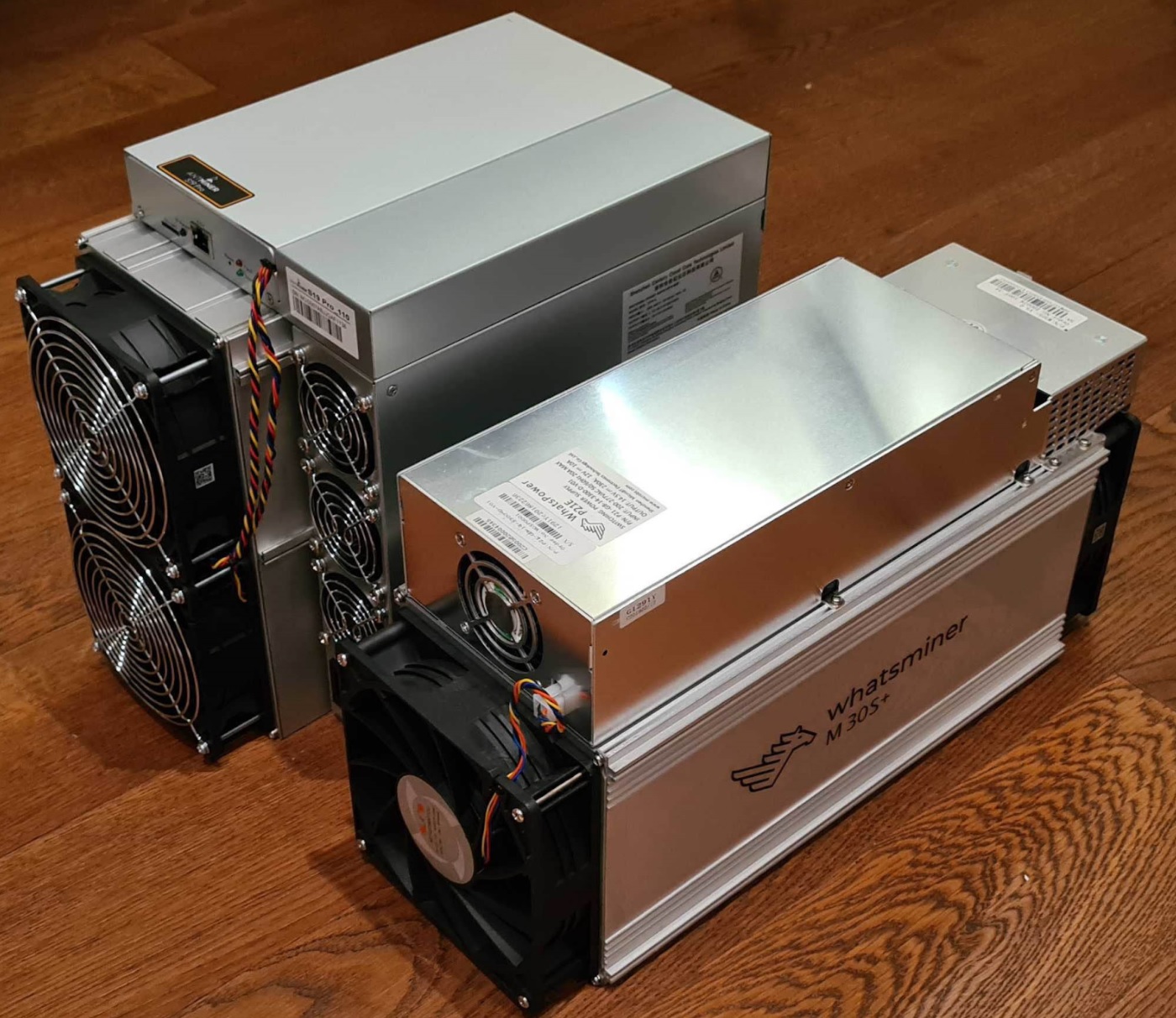Mining Bitcoin is the cornerstone of the BTC network, providing both security and new Bitcoins into circulation. This essential process involves powerful computers solving complex mathematical problems to validate transactions on the network. As a reward for this computational work, miners receive new bitcoins, making it a potentially lucrative endeavor.
In this guide, we will explore the key aspects of “How to mine Bitcoin.” From understanding the basic mechanisms of how mining Bitcoin works to evaluating its economic feasibility, including the costs, potential earnings, and the time it takes to mine a single BTC. We’ll also guide you through the practical steps of setting up a mining operation, including choosing the right Bitcoin mining rig and the necessary software.
Moreover, for those looking to expand their mining activities beyond Bitcoin, we’ll cover the essentials of mining cryptocurrencies. We’ll introduce various crypto mining software and tools, providing a comprehensive view of the wider crypto mining landscape.
How To Mine Bitcoin
Mining Bitcoin is the process through which new bitcoins are released and transactions are added to the blockchain. At its heart lies the Proof of Work (PoW) algorithm, which requires miners to solve complex mathematical problems to validate transactions. Miners compete to complete these problems first, and the winner receives Bitcoin rewards.
This process inherently involves the difficulty adjustment, which ensures that the rate of block creation remains constant, and the hash rate, which is a measure of the processing power of the Bitcoin network. These elements combine to form the backbone of Bitcoin mining, securing the network and enabling the decentralized control that Bitcoin is renowned for.

Mining Bitcoin Explained
Bitcoin mining is a complex and multifaceted process, crucial for both the creation of new Bitcoins and the maintenance of the network’s integrity and security. Here’s an in-depth look at its key aspects:
Proof Of Work
Proof-of-Work (PoW) is a critical blockchain consensus mechanism that dates back to 1993 when Cynthia Dwork and Moni Naor first conceptualized it to deter email spam and DoS attacks. Adam Back’s Hashcash in 1997 advanced this concept by incorporating computational difficulty to combat email spam. These early forms of PoW laid the groundwork for Bitcoin’s implementation by Satoshi Nakamoto in 2009, which effectively solved the double-spending problem in digital currencies without the need for a centralized authority.
Bitcoin’s PoW operates like a computational lottery, with miners vying to solve cryptographic puzzles using the SHA-256 hash function. The more computational power a miner contributes, the higher their chances of solving the puzzle and receiving the block reward in Bitcoin. This mining process is fundamental to Bitcoin’s decentralized security and transaction validation.
The difficulty of mining adjusts approximately every two weeks or every 2,016 blocks, maintaining an average block time of around 10 minutes. This adjustment is crucial for the network’s stability, ensuring a steady rate of new block creation and coin issuance despite changes in network hash rate. The Bitcoin block reward, initially 50 BTC per block, halves every 210,000 blocks, a mechanism known as Bitcoin halving. This built-in deflationary aspect of Bitcoin is designed to gradually reduce the issuance of new coins.
PoW’s significance lies in its ability to secure the Bitcoin network through decentralization. By incentivizing miners across the globe to contribute computational power, it replaces the traditional role of central authorities in validating transactions.
Hash Rate
The hash rate, a critical metric in mining Bitcoin, refers to the total processing power utilized by miners on the network. It indicates how many calculations per second the network can perform, where a higher hash rate reflects greater security and mining difficulty. The hash rate directly influences the competitiveness among miners and the overall efficiency of the mining process. As Bitcoin’s price increases, more miners are encouraged to join the network, pushing the hash rate higher and making the mining process more competitive and energy-intensive.
Difficulty Adjustment
Bitcoin’s protocol includes a dynamic mechanism called difficulty adjustment, ensuring that new blocks are discovered approximately every 10 minutes. This adjustment occurs every 2,016 blocks, or roughly every two weeks, based on the total hashing power of the network.
If blocks are mined too quickly, the difficulty increases, making it harder to find new blocks. Conversely, if the block interval is slower than expected, the difficulty decreases. This self-regulating system maintains a stable block discovery rate, balancing the network against fluctuations in miner numbers and equipment efficiency.
Bitcoin Mining Economics Explained
Bitcoin mining economics encompass various factors such as computational power, energy costs, and market dynamics. Understanding these factors is crucial for any miner or investor who wants to know “how to mine Bitcoin.”

How Do You Mine Bitcoin?
Mining Bitcoin involves two major steps: building a block and proving the block. The former includes selecting and processing transactions for inclusion in the new block, while the latter involves solving a cryptographic hashing puzzle. This puzzle, part of the Proof-of-Work consensus, requires miners to generate a hash below the network’s target hash using high-powered computer hardware, typically ASIC miners. Once a miner successfully solves the puzzle, they broadcast the new block to the network, which is then verified by other miners.
Can You Still Mine Bitcoin?
Yes, individuals can still mine Bitcoin. However, it has evolved into a highly competitive and resource-intensive endeavor, with public listed companies taking the lead. Among the top mining companies are Marathon Digital (MARA), Riot Blockchain (RIOT), Canaan (CAN), Hut 8 (HUT), Cipher (CIFR), Core Scientific (CORZ), Bitfarms (BITF), Iris Energy (IREN), CleanSpark (CLSK) and Bitdeer Technologies.
The block reward, which includes both the block subsidy and the transaction fees, is the core incentive for miners. Currently, the block reward is higher than the transaction fees, but this will eventually change with one of the next Bitcoin halvings, but also depends on the evolution of the Bitcoin price.
How Long Does It Take To Mine A Bitcoin?
The time it takes to mine a Bitcoin is not fixed and depends on several factors, including the miner’s hash rate, the total network hash rate, and the current mining difficulty. The protocol is designed to adjust the difficulty to maintain an average block time of about 10 minutes.
However, for an individual miner, especially one with limited resources like one mining rig, mining a single Bitcoin can take years. This often leads solo miners to join mining pools to increase the chances of earning rewards more frequently.
Growing Trend In Mining Bitcoin: Renewables
Research by environmentalist Daniel Batten suggests that mining Bitcoin can become carbon negative by utilizing waste methane as an energy source. Around 30% of the global temperature rise is attributed to methane, which has 80 times the warming power of carbon dioxide. Notably, 11% of global methane emissions come from landfills. Bitcoin mining can convert this waste methane into carbon dioxide, significantly reducing its environmental impact. Batten himself aims to generate 32 megawatts of power from landfills, offsetting about 4 million tonnes of carbon dioxide, which equates to 10% of Bitcoin’s carbon footprint.
In their latest research, the Bitcoin Mining Council’s (BMC) highlighted significant strides in sustainability and efficiency within the Bitcoin mining industry. The BMC, representing 45.4% of the global Bitcoin Mining Network, reported that its members are utilizing electricity with a 67.8% sustainable power mix. This figure reflects an estimated global average of 59.4% for the industry, marking an approximately 3% year-on-year increase from 2021. This progress positions the Bitcoin mining industry as one of the most sustainable globally.
How To Start Mining Bitcoins: A Step-by-Step Guide
Embarking on the journey of mining Bitcoin requires a strategic approach, starting with the selection of the right equipment.
Selecting the Right Bitcoin Mining Rig
Choosing the appropriate Bitcoin mining rig is critical for efficiency and profitability. The ideal rig should balance power, energy consumption, and cost. ASIC miners are the standard in mining Bitcoin due to their superior hash rates and energy efficiency compared to GPUs or CPUs.
When selecting an ASIC miner, consider factors like hash rate, energy consumption (measured in watts), cost, and the miner’s longevity. Higher hash rates increase the chances of successfully mining a block, but they also come with higher energy demands and costs. Balancing these factors based on your budget and the current Bitcoin mining landscape is key to a successful mining operation.

Comparison Of The Best Bitcoin Mining Rigs
Here’s a comparison of some of the best Bitcoin mining rigs in 2023:
- Bitmain Antminer S21 Hyd: Latest Bitcoin miner by market leader Bitmain, released in September 2023. It delivers a hashrate of 335 Th/s while consuming 5360 W of power, available for pre-order at $5,897.16. It features a hydro-cooling system and is designed for high efficiency and adaptability to various environmental conditions.
- Bitmain Antminer S21: Offers a hashrate of 200 Th/s at a power consumption of 3010 W, priced at $4,500. Known for its air-cooling system, it operates effectively in environments with temperatures up to 45 degrees Celsius.
- Bitmain AntMiner S19 Pro: Hash Rate 110 Th/s, Power Consumption 3250 W, Price $3,230. High hash rate, but expensive and power-intensive.
- Bitmain Antminer S19 XP Hyd: Hash Rate 255 Th/s, Power Consumption 5346 W. Known for its extraordinary power and efficiency, it is the most powerful individual miner on the list. User-friendly interface, but price at $6,600.
- Whatsminer M30S++: Hash Rate 112TH/S, Power Consumption 3472 W, Price $2,455 (used). Very powerful but more expensive and not ideal for beginners.
- Canaan AvalonMiner 1246: Hash Rate 90Th/s, Power Consumption 3420W, Price $3,890. Fast hash rates and efficient, but comes with high noise levels.
- Ebang Ebit E11++: Hash Rate 44 Th/s, Power Consumption 1980 W, Price $350 (used). Efficient and reasonably priced, but not ideal for home mining due to high noise levels.
Mine Bitcoins Software: Installing And Configuring
Selecting the right software is crucial for efficient Bitcoin mining. Here are some of the best Bitcoin mining software options in 2023:
- CGMiner: Best overall for its ease of use and comprehensive features. It supports ASICs, GPUs, and FPGAs and runs on Windows, Mac, and Linux. However, it might be challenging for beginners due to its command-line interface.
- MultiMiner: Ideal for beginners, offering an intuitive platform and easy setup. It’s optimized for Windows, with additional software required for Mac and Linux. While user-friendly, it may lack advanced features.
- BFGMiner: Designed for advanced miners, this software offers extensive customization options and supports multiple coin mining. It’s compatible with various operating systems but is not suitable for beginners.
- Awesome Miner: Great for large-scale mining operations, allowing management of multiple rigs and pools from a single dashboard. It supports over 50 mining engines but may be complex for beginners and lacks MacOS compatibility.
- NiceHash: Best for cloud mining, this platform facilitates the trade of hashing power. It’s easy to use and set up, with a mobile app available, but comes with service fees and fluctuating bid pricing on hash power.
Bitcoin Mining At Home: Worth It?
Bitcoin mining at home can be challenging due to factors like hardware costs, high energy consumption, noise, and heat. While it offers a way to participate in the Bitcoin network, the profitability largely depends on electricity costs, hardware efficiency, and Bitcoin’s market price. For hobbyists or those with access to cheap electricity, it can be a viable option. However, for most individuals, joining a mining pool or cloud mining may be more practical and cost-effective.
Notably, the estimated electricity cost of mining one Bitcoin varies globally. The following map by CoinGecko shows the estimated cost, based on the average price of electricity.

Exploring Crypto Mining
Mining cryptocurrency extends far beyond Bitcoin, offering opportunities to mine a variety of altcoins. Altcoins, or alternative cryptocurrencies, have different technical underpinnings, mining mechanisms, and market dynamics compared to Bitcoin.
Mining Cryptocurrency: Which Altcoins You Can Mine
While Bitcoin remains the most well-known and mined cryptocurrency, several altcoins present attractive alternatives for miners. Here are some notable altcoins that use a Proof-of-Work and are popular in the mining community:
- Litecoin (LTC): Often referred to as the silver to Bitcoin’s gold, Litecoin offers a faster block generation time and uses the Scrypt hashing algorithm. This algorithm is less memory-intensive than Bitcoin’s SHA-256, allowing miners to use less powerful hardware.
- Dogecoin (DOGE): Originally created as a meme, Dogecoin has grown in popularity and credibility. It also utilizes the Scrypt algorithm and can be mined with the same hardware used for Litecoin, making it a viable option for those looking to diversify their mining activities.
- Monero (XMR): Monero focuses on privacy and decentralization. Its mining algorithm is designed to be ASIC-resistant, favoring CPU and GPU mining. This approach ensures a more egalitarian distribution of mining rewards, making it an attractive choice for individual miners.
- Zcash (ZEC): Zcash emphasizes privacy and anonymity in transactions. It uses the Equihash algorithm, which is also resistant to ASIC mining. This characteristic levels the playing field between individual miners and large mining operations, making GPU mining more effective.
- Dash (DASH): Known for its fast transaction speeds, Dash operates on a X11 algorithm, which is a combination of 11 different hashing algorithms. This complexity makes it more resistant to ASIC mining, allowing for a broader range of hardware to be used for mining.
Crypto Mining Software
Crypto mining software is essential for connecting your hardware to the blockchain or mining pool. Different cryptocurrencies often require specific software due to their unique algorithms and mining processes. Here, we’ll focus on the recommended mining software for Litecoin, Dogecoin, and Monero, three popular altcoins in the mining community.
Litecoin And Dogecoin Mining Software
- CGMiner: This is a versatile, open-source mining tool that supports a wide range of cryptocurrencies, including Litecoin and Dogecoin. It’s compatible with ASIC, FPGA, and GPU hardware and is known for its stability and efficiency.
- EasyMiner: A user-friendly graphical interface makes EasyMiner a good choice for beginners. It works well with Litecoin and Dogecoin and offers a ‘Moneymaker’ mode, which automatically configures your miner for mining Litecoin on its own pool.
- MultiMiner: Ideal for those new to mining, MultiMiner features a graphical interface and is compatible with hardware mining Litecoin and Dogecoin. It offers direct access to mining engine arguments and API settings.
- Awesome Miner: This is a powerful tool suitable for larger-scale mining operations. It supports Litecoin and Dogecoin and offers comprehensive management features for various mining rigs and pools.
Monero Mining Software
- XMRig: XMRig is a high-performance Monero (XMR) CPU miner, with official support for Windows. It’s widely regarded as one of the most efficient and versatile miners for Monero and offers detailed statistics about your mining operations.
- MoneroSpelunker: This is a simple, easy-to-use GUI miner for Monero, making it ideal for beginners. While not as efficient as XMRig for advanced users, it’s a good starting point for those new to Monero mining.
- MinerGate: MinerGate is a mining pool that also offers a GUI mining solution. It supports Monero and allows you to mine various cryptocurrencies simultaneously without reducing the hash rate for the major coin.
- SRBMiner-MULTI: This miner supports CPU mining of Monero and various other coins. It’s known for its efficiency and the ability to mine multiple currencies at the same time.
Best Crypto Mining Tools
In addition to mining software, there are various tools that can enhance the mining experience, improve efficiency, and manage your mining operations effectively. These tools include:
- Mining Operating Systems: Specialized mining operating systems like Hive OS or SMOS (SimpleMining OS) can optimize your mining hardware’s performance. They offer easy setup and management of your mining rigs, whether you’re mining Litecoin, Dogecoin, Monero, or other cryptocurrencies.
- Hardware Monitoring Tools: Software like MSI Afterburner or HWiNFO can monitor your mining hardware, providing real-time data on temperature, fan speed, and performance. This is crucial for maintaining your hardware’s longevity and efficiency.
- Mining Profitability Calculators: Websites like WhatToMine or CoinWarz allow miners to calculate potential profits from various cryptocurrencies, considering factors like hash rate, power consumption, and current market prices. These tools are vital for assessing the viability of mining different altcoins.
- Pool Management Tools: If you’re part of a mining pool, tools like PoolWatch.io or Mining Pool Stats can help you track your performance, payouts, and the pool’s overall statistics.
- Cryptocurrency Wallets: Secure storage for your mined coins is crucial. Each cryptocurrency typically has its own recommended wallets, but in general you should prefer hardware wallets (“cold wallets”) over software wallets for the highest level of security.
The Economics Of Mining Bitcoin And Cryptocurrencies
The economics of mining Bitcoin and other cryptocurrencies is a critical area for anyone considering entering this field. It involves understanding the costs associated with mining and the potential returns. This section will cover the fundamentals of calculating these costs and returns, providing insights into the financial aspects of cryptocurrency mining.
Calculating the Costs and Returns of Mining
To understand the economics of mining, one must first be able to calculate both the costs involved and the potential returns. Here are the key factors to consider:
- Hardware Costs: The initial investment in mining hardware, such as ASIC miners for Bitcoin or high-end GPUs for crypto mining, is usually the most significant expense. The choice of hardware impacts both the efficiency and the potential earnings from mining.
- Electricity Costs: Mining consumes a substantial amount of electricity. The cost of power can vary widely depending on geographic location and can significantly impact overall profitability.
- Maintenance And Overhead: This includes costs related to cooling systems, internet connectivity, hardware maintenance, and any other operational expenses.
- Mining Pool Fees: If you join a mining pool, which is common, especially for Bitcoin mining, you will have to pay fees, which are usually a percentage of the earnings.
- Network Difficulty And Hash Rate: These are dynamic variables that affect how much you can earn. Higher network difficulty and hash rate mean more competition, potentially reducing individual earnings.
- Cryptocurrency Value: The price of the cryptocurrency being mined is perhaps the most volatile factor. Higher prices can lead to higher earnings, but the opposite is also true.
The return on investment (ROI) is calculated by comparing the total costs (including the initial investment and ongoing expenses) against the revenue generated from mining. Calculators like CoinWarz and CryptoCompare can help estimate profitability based on current conditions.
How Much Does Mining Make?
The earnings from mining can vary greatly and are influenced by several factors:
- Bitcoin Mining: The profitability of mining Bitcoin has decreased over time due to increased competition and halving events, which reduce the block reward. Large-scale operations in regions with cheap electricity are generally more profitable.
- Crypto Mining: Some altcoins may offer higher profitability than Bitcoin, especially for individual miners or small setups. However, their market value can be more volatile, impacting earnings.
- Market Conditions: The cryptocurrency market is highly volatile. Significant price swings can dramatically affect mining profitability.
- Efficiency: The efficiency of your mining setup, including the hash rate of your hardware and your operational efficiency (like cooling and electricity costs), plays a crucial role in determining profitability.
- Pool Earnings: Joining a mining pool can result in more consistent, albeit smaller, earnings compared to solo mining.
On average, the daily earnings for a miner can range from a few dollars to several hundred, depending on these factors. It’s crucial to conduct thorough research and calculations based on current market conditions and individual circumstances to get a realistic estimate of potential earnings from mining.
FAQs: How To Mine Bitcoin
This section addresses some of the most frequently asked questions about Bitcoin and cryptocurrency mining, offering clear and concise answers for both newcomers and experienced miners.
How to Mine Bitcoin?
To mine Bitcoin, acquire specialized mining hardware (ASIC miners are recommended), choose and install suitable mining software, and either set up a solo mining operation or join a mining pool. Additionally, create a secure Bitcoin wallet for receiving mining rewards.
How To Start Mining Bitcoin?
To start mining Bitcoin, you need to invest in appropriate hardware (like ASIC miners), choose mining software, join a mining pool if desired, and set up a Bitcoin wallet to store your rewards. Ensure you have a reliable power source and internet connection.
How Do You Mine Bitcoin?
Mining Bitcoin involves using specialized hardware to solve complex mathematical problems. Successful miners receive Bitcoin as a reward for adding new blocks to the blockchain. The process requires significant computational power and electricity.
Can You Still Mine Bitcoin?
Yes, you can still mine Bitcoin, but you’ll face fierce competition and a resource-intensive process. It necessitates significant investment in hardware and electricity.
What Is The Bitcoin Generator?
The term “Bitcoin generator” is often associated with scams. Legitimate Bitcoin mining is the only way to generate new Bitcoins, and it involves computational work using mining hardware.
How Do You Mine For Bitcoin?
You mine for Bitcoin by setting up mining hardware, running mining software, and participating in the network to validate transactions and discover new blocks. This process often involves joining a mining pool.
How To Make Bitcoin?
Besides mining, you can make Bitcoin by trading, participating in affiliate programs, offering goods or services for Bitcoin, or through Bitcoin faucets, although the latter often provides minimal returns.
How To Start Bitcoin Mining?
To start Bitcoin mining, research and purchase efficient mining hardware, decide between solo mining and joining a pool, download and configure mining software, and set up a secure Bitcoin wallet for payouts.
How Do I Generate Bitcoins?
Mining produces Bitcoins. This involves using computational power to solve cryptographic puzzles, thereby validating transactions and creating new blocks on the Bitcoin blockchain.
How To Bitcoin Mine?
Bitcoin mining requires specialized hardware (ASICs), mining software, and a stable electricity and internet supply. You can mine independently or join a pool to increase your chances of earning rewards.
How To Mine For Bitcoin?
To mine for Bitcoin, acquire suitable mining hardware, select and configure mining software, ensure a stable power and internet connection, and consider joining a mining pool to improve your chances of earning rewards.
How Are Bitcoins Created?
During the mining process, miners tackle complex mathematical problems to validate transactions and bolster the network’s security, thereby generating new Bitcoins as rewards for their work.
How To Generate Bitcoins?
The only legitimate way to generate Bitcoins is through mining. Be wary of any service claiming to generate Bitcoins without mining, as these are likely scams.
What Is A Bitcoin Mine?
A Bitcoin mine refers to a setup where Bitcoin mining takes place. It typically involves a series of computers (miners) working to solve mathematical puzzles that validate transactions and create new Bitcoins.
How Do You Mine Bitcoins?
Mining Bitcoins involves setting up mining hardware, installing mining software, solving cryptographic puzzles to validate transactions, and being part of the network that maintains the blockchain.
How Do You Mine Cryptocurrency?
Mining cryptocurrency generally involves setting up a computer system with specialized hardware and software to solve mathematical puzzles, validate transactions, and secure the network of a specific cryptocurrency.
How Is Crypto Mined?
Crypto mining involves using computers to solve complex puzzles, validating transactions on the blockchain. Miners who successfully solve cryptographic puzzles receive Proof of Work based cryptocurrencies as a reward.
How Is Cryptocurrency Mined?
To mine cryptocurrency, individuals solve cryptographic puzzles, thereby securing a blockchain network. In Proof of Work (PoW) systems, this requires powerful computing resources, whereas Proof of Stake (PoS) systems involve validators staking cryptocurrency to earn the right to validate transactions and create new blocks.












